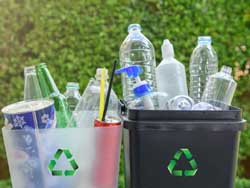Introduction
Green manufacturing is becoming increasingly crucial as industries worldwide strive to reduce their environmental impact. In India, this transition is both a challenge and an opportunity, given the country’s unique economic and environmental landscape. Green manufacturing has emerged as a critical focus for the Indian industrial landscape, driven by global sustainability goals and domestic imperatives. With India targeting a $5 trillion economy and net-zero emissions, the integration of eco-friendly processes in manufacturing is gaining significant momentum. Below is an exploration of the key innovations and challenges shaping green manufacturing in India.This article explores the latest innovations and the challenges faced by the Indian manufacturing sector in its journey towards sustainability.
Innovations in Green Manufacturing

Renewable Energy Integration
One of the most significant innovations in green manufacturing is the integration of renewable energy sources. Indian manufacturers are increasingly adopting solar and wind energy to power their operations. For instance, Tata Steel has installed a 30 MW solar power plant in Jamshedpur, which is expected to reduce carbon dioxide emissions by 25,000 tonnes annually.
Advanced Recycling Technologies
Recycling is another area where Indian manufacturers are making strides. Advanced recycling technologies, such as chemical recycling and waste-to-energy processes, are being implemented to manage industrial waste more effectively. For example, Reliance Industries has developed a chemical recycling process that converts post-consumer PET waste into high-quality polyester.
Green Supply Chain Management
Green supply chain management involves optimizing the entire supply chain to minimize environmental impact. This includes sourcing raw materials sustainably, reducing transportation emissions, and ensuring that suppliers adhere to environmental standards. ITC Limited has implemented a comprehensive green supply chain strategy, resulting in a 20% reduction in carbon emissions across its supply chain.
Digital Transformation
Digital technologies, such as the Internet of Things (IoT) and Artificial Intelligence (AI), are revolutionizing green manufacturing. These technologies enable real-time monitoring and optimization of manufacturing processes, leading to significant energy savings and reduced emissions. Larsen & Toubro (L&T) uses IoT to monitor energy consumption and optimize operations, achieving a 15% reduction in energy use.
Challenges in Green Manufacturing

High Initial Costs
One of the primary challenges in adopting green manufacturing practices is the high initial investment required. Renewable energy systems, advanced recycling technologies, and digital transformation tools all come with significant upfront costs. This can be a major barrier, especially for small and medium-sized enterprises (SMEs) in India.
Lack of Awareness and Expertise
Many Indian manufacturers, particularly SMEs, lack awareness and expertise in green manufacturing practices. This knowledge gap can hinder the adoption of sustainable practices. Capacity-building initiatives and knowledge dissemination programs are essential to bridge this gap and empower manufacturers.
Regulatory and Policy Challenges
The regulatory environment in India can be complex and challenging for manufacturers looking to adopt green practices. Inconsistent policies, lack of incentives, and bureaucratic hurdles can slow down the transition to sustainable manufacturing. Streamlining regulations and providing clear incentives for green practices are crucial steps needed to overcome these challenges.
Infrastructure Deficit
India’s infrastructure, particularly in terms of energy and waste management, poses a significant challenge to green manufacturing. The lack of adequate infrastructure can make it difficult for manufacturers to implement sustainable practices effectively. Investments in infrastructure development are necessary to support the green transition.
Opportunities Ahead
Government Initiatives and Support
The Indian government has launched several initiatives to promote green manufacturing, such as the National Action Plan on Climate Change (NAPCC) and the Make in India campaign. These initiatives provide a supportive framework for manufacturers to adopt sustainable practices.
Growing Consumer Demand
There is a growing demand for sustainable products among Indian consumers. This shift in consumer preferences presents a significant opportunity for manufacturers to differentiate themselves by adopting green practices and offering eco-friendly products.
International Market Access
Adopting green manufacturing practices can also open up international market opportunities. Many global markets are increasingly prioritizing sustainability, and Indian manufacturers that meet these standards can gain a competitive edge.
Innovations Driving Green Manufacturing

1. Adoption of Renewable Energy
India has become a global leader in renewable energy, with the fourth-highest installed capacity for solar and wind power. Manufacturing units are increasingly integrating renewable energy into operations to reduce carbon footprints and achieve long-term cost savings.
2. Circular Economy Practices
Companies are adopting circular economy principles by minimizing waste, reusing materials, and incorporating recycled components into production. For example, ITC has made strides in water conservation and renewable energy, reducing resource dependency and enhancing sustainability.
3. Green Technologies
Manufacturers are leveraging technologies like energy-efficient machinery, advanced recycling systems, and eco-friendly materials. Tata Motors, for instance, has invested heavily in electric vehicle production, showcasing the role of green innovation in transforming industries.
4. Digitalization and IoT Integration
Digital tools like IoT, AI, and blockchain are being used to optimize resource utilization, monitor emissions, and enhance operational efficiency. These technologies not only boost productivity but also help meet sustainability standards.
Challenges Hindering Progress
1. High Initial Costs
Transitioning to green manufacturing involves significant upfront investments in new technologies, training, and infrastructure. This poses a barrier for small and medium enterprises (SMEs), which form a large part of India’s manufacturing sector.
2. Policy Gaps
While the Indian government has introduced initiatives like the ‘Sustainable Strategic Action Plan,’ enforcement remains inconsistent. Clearer regulations and incentives for smaller firms are essential to encourage widespread adoption.
3. Skill Deficiencies
The lack of a trained workforce capable of managing and implementing green technologies continues to be a hurdle. Companies must invest in reskilling their employees to bridge this gap.
4. Resource Constraints
Although India is focusing on resource security, the country still faces challenges such as water scarcity and dependence on imported raw materials. Efficient resource management remains a critical area of concern.
Key Case Studies
- ITC: Pioneering water conservation and renewable energy initiatives, ITC has significantly reduced operational costs while improving its environmental footprint.
- Tata Motors: Innovating in electric vehicle manufacturing, it exemplifies how green manufacturing aligns with future market demands.
In India, the recycling rate varies significantly depending on the type of waste. Here are some key statistics:
- Municipal Solid Waste (MSW): India generates approximately 170,338 tonnes per day (TPD) of municipal solid waste, of which about 91,512 TPD is treated. This indicates that around 54% of MSW is processed, but not all of it is recycled.
- Plastic Waste: Approximately 60% of plastic waste in India is recycled. This high rate is largely due to the extensive informal recycling sector.
- Construction and Demolition Waste: Only about 1% of construction and demolition waste is officially recycled.
- Overall Recycling Rate: It is estimated that only about 20% of the total waste generated in India is recycled, with the rest ending up in landfills or the environment.
And yes, there are several successful recycling initiatives in India that have made significant impacts. Here are a few notable examples:
The Plastic Waste Management Rules

Implemented in 2018, these rules have been instrumental in reducing plastic waste pollution in India. Key features include:
- Extended Producer Responsibility (EPR): Manufacturers and importers are required to take responsibility for the end-of-life management of plastic products.
- Ban on Single-Use Plastics: Certain single-use plastic items, such as plastic bags, straws, and cutlery, have been banned.
- Waste Segregation: The rules mandate waste segregation at source, making it easier to collect and recycle plastic waste.
The Swachh Bharat Mission
Launched in 2014, this mission aims to make India clean and open defecation-free. While primarily focused on sanitation, it has also contributed to waste management efforts through:
- Community Engagement: Encouraging community participation in waste management activities.
- Infrastructure Development: Investing in waste management infrastructure, such as waste treatment plants and composting facilities.
- Awareness Campaigns: Promoting proper waste disposal and recycling through extensive awareness campaigns.
Tata Steel’s Recycling Initiatives
Tata Steel, one of India’s leading steel producers, has implemented several innovative recycling initiatives, including:
- Scrap Metal Recycling: Recycling a significant amount of scrap metal, reducing reliance on primary iron ore.
- Wastewater Recycling: Recycling wastewater from manufacturing processes, significantly reducing water consumption.
- Green Manufacturing: Adopting green manufacturing practices to minimize waste generation and environmental impact.
Yes, there are several notable international collaborations focused on recycling and waste management in India. Here are a few key examples:
India-Australia Industry and Research Collaboration
In June 2020, Australia and India launched an ambitious program to reduce plastic waste. This collaboration, known as the India-Australia Industry and Research Collaboration for Reducing Plastic Waste, aims to catalyze innovation in the plastic supply chain and create a circular model for plastics. The initiative involves key research institutions from both countries, including the CSIRO, The Energy and Resources Institute (TERI), and the University of New South Wales.
The Plastics Pact
India became the first Asian country to launch a Plastics Pact in 2021. This initiative, supported by the World Wildlife Fund (WWF) and the Confederation of Indian Industry (CII), aims to bring together businesses, governments, and NGOs to tackle plastic waste. The pact focuses on creating a circular economy for plastics by promoting recycling and reducing single-use plastics.
National Circular Economy Roadmap
Developed with input from industry, government, and community participants, the National Circular Economy Roadmap for Reducing Plastic Waste in India is a collaborative effort between India and Australia. This roadmap outlines strategies for transitioning to a circular economy for plastics, emphasizing the importance of multi-stakeholder partnerships.
World Economic Forum Initiatives
The World Economic Forum (WEF) has been actively involved in promoting collaborative solutions to tackle plastic waste in India. Through various initiatives, WEF works with local governments, private sector players, and civil society organizations to implement effective waste management practices and drive sustainability.
These collaborations highlight the importance of international cooperation in addressing the complex challenges of waste management and recycling. By leveraging global expertise and resources, India is making significant strides towards a more sustainable future.
How India is creating collaborative solutions to tackle waste: National Circular Economy Roadmap for Reducing Plastic Waste in India: India’s plastic recycling market and innovation landscape.
Informal Sector Contributions
The informal recycling sector in India plays a crucial role in waste management. Informal waste pickers collect and segregate waste, contributing significantly to the recycling rates, especially for plastics. This sector is estimated to handle about 60% of the plastic waste generated in India.
Corporate Social Responsibility (CSR) Projects
Many companies in India are implementing waste management projects under their CSR initiatives. For example, Hindustan Unilever’s “Plastic Waste Management Program” aims to collect and process over 100,000 tonnes of post-consumer plastic waste by 2025.
These initiatives highlight the potential for effective waste management and recycling in India, showcasing innovative approaches and positive impacts on the environment and economy.
The Path Forward
To scale green manufacturing, a collaborative approach involving government policies, corporate leadership, and technological advancements is essential. Incentives like tax breaks for green technologies, public-private partnerships, and investments in R&D are pivotal to overcoming barriers.
Green manufacturing not only ensures environmental sustainability but also enhances India’s global competitiveness. By addressing challenges head-on and fostering innovation, India is poised to lead the way in sustainable industrial development.
Conclusion
The journey towards green manufacturing in India is fraught with challenges, but it also offers immense opportunities. By embracing innovations and overcoming the hurdles, Indian manufacturers can not only contribute to environmental sustainability but also achieve long-term economic success. The future of manufacturing in India lies in its ability to balance growth with sustainability. Towards Green Industrialization in India: Challenges and Opportunities ,Unleashing Innovation Potential: Insights from India’s Manufacturing Sector: ITC Limited’s Sustainability Report: Larsen & Toubro’s Digital Transformation Initiatives












